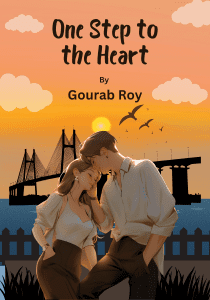Percy Bysshe Shelley, a towering figure of the Romantic period, is known for his revolutionary ideas, visionary poetry, and lyrical genius. His poem, Ode to a Skylark, stands out as a sublime expression of the Romantic preoccupation with nature, beauty, and the ideal. Written in 1820, during a time when Shelley was grappling with the limitations of human experience and the boundless possibilities of nature, the poem epitomizes his yearning for transcendence.
In Ode to a Skylark, Shelley captures the essence of an ethereal creature— a skylark—whose song echoes an almost divine joy and bliss. But beneath the surface lies a much deeper meditation on the human condition, the limitations of human knowledge, and the unachievable nature of perfection. The skylark, in Shelley’s portrayal, is not just a bird but a symbol of the unattainable ideal, representing the harmonious existence humans can only dream of but never truly attain.
Summary and Analysis
Stanzas 1-5: The Skylark’s Flight and Song
The poem opens with Shelley addressing the skylark as a “blithe Spirit” that is never seen but only heard. He marvels at how the bird “from heaven, or near it” pours out a melody that seems to transcend the physical world. The skylark, in Shelley’s portrayal, is not bound by earthly concerns, its song rising “Higher still and higher” through the sky. This immediate contrast between the earthly and the ethereal sets the tone for the entire poem. The skylark’s flight becomes a metaphor for the poet’s longing to break free from the human condition and experience an existence untainted by sorrow.
In the next stanzas, Shelley continues to build on the imagery of the skylark’s divine nature. The bird sings as it flies, “singing still dost soar, and soaring ever singest,” suggesting a seamless harmony between movement and song, a state of existence that combines action and joy without interruption. It is pure, untethered to the physical limitations that define human life. The skylark’s song is described as being “unpremeditated,” emphasizing its spontaneous and effortless beauty. For Shelley, this represents an ideal form of expression, one that human beings can never fully achieve, as our expressions are inevitably weighed down by thought, deliberation, and personal experience.
Stanzas 6-12: The Skylark and Natural Imagery
Shelley then proceeds to evoke a series of natural images in an attempt to describe the skylark’s song, though each metaphor fails to fully capture its essence. He compares it to a poet who “scatters unextinguished laughter” and a maiden singing to herself in a secluded room, both striving to create something beautiful. However, the skylark’s song surpasses these earthly examples. He likens the bird to a glow-worm hidden in a field of flowers and a rose surrounded by thick leaves, whose fragrance is known but whose source is hidden. These comparisons serve to underline the ineffability of the skylark’s song; it can only be described in relation to the most beautiful and elusive phenomena in nature, but it always remains just out of reach.
The skylark, Shelley claims, sings of joy unadulterated by pain or sorrow. This notion is particularly striking because it stands in direct contrast to the Romantic notion that joy and suffering are intertwined. Shelley, like many of his Romantic contemporaries, often wrote of the human condition as one where joy and beauty are fleeting, constantly shadowed by death and loss. The skylark, however, exists outside of this paradigm. It knows only happiness, and thus its song is purer and more divine than anything humans can ever create.
Stanzas 13-17: The Human Condition and the Skylark’s Transcendence
Shelley’s admiration for the skylark deepens as he reflects on its difference from humans. While human beings are burdened by “the weariness, the fever, and the fret” of life, the skylark is free from such suffering. Humans are subject to a cycle of desire, disappointment, and loss. Shelley laments that even in moments of great joy, humans are always conscious of the fragility of happiness. The skylark, however, seems untouched by these concerns, suggesting that its existence is closer to the divine.
In the lines, “Our sweetest songs are those that tell of saddest thought,” Shelley summarizes one of the great Romantic paradoxes: that beauty and joy are often borne from pain and suffering. Human beings, he suggests, cannot experience pure joy because we are always aware of its impermanence. Even our art and music, no matter how beautiful, are tinged with sorrow. The skylark, however, knows no such duality. Its song is pure joy, unburdened by the weight of experience, and in this way, it is infinitely superior to human expression.
Stanzas 18-21: The Skylark as the Ideal
In the final stanzas of the poem, Shelley expresses his desire to learn from the skylark. He longs to know “half the gladness” that the bird must feel, convinced that such knowledge would allow him to create poetry that moves the world in a profound way. The skylark becomes a symbol of the ideal artist, one who creates not out of need or suffering but from a place of pure inspiration. Shelley’s longing to emulate the skylark’s freedom and joy reflects his own artistic ambitions but also his understanding that such perfection is ultimately unattainable for human beings.
In the end, Shelley recognizes the skylark as an ideal, a figure that represents something beyond human reach. The bird is a symbol of what humans strive for but can never fully attain: perfect beauty, pure joy, and unmediated expression.
Character Analysis: The Skylark as an Idealized Figure
While Ode to a Skylark does not contain traditional characters in the narrative sense, the skylark itself can be viewed as a central “character,” representing an ideal that Shelley reveres and aspires to emulate.
The skylark is characterized as an ethereal, divine being, elevated above the mundane concerns of human existence. Shelley presents the bird as a figure of pure joy and inspiration, existing in a realm beyond pain, sorrow, or loss. The skylark’s song is described as effortless and spontaneous, untainted by the complexities that define human art and emotion. In this sense, the skylark becomes a symbol of the ideal artist, one who creates not out of necessity or struggle but from a place of boundless joy and inspiration.
However, the skylark is also an unattainable ideal. Throughout the poem, Shelley acknowledges the impossibility of reaching the same level of perfection. As humans, we are bound by the limitations of our experiences, our emotions, and our consciousness of mortality. The skylark, on the other hand, represents a state of being that is free from these constraints, making it an inspiring yet elusive figure.
Themes in “Ode to a Skylark”
1. The Transcendence of Nature
One of the central themes of Ode to a Skylark is the transcendence of nature, which Shelley explores through the skylark’s flight and song. The skylark is portrayed as a figure that exists beyond the physical world, soaring higher and higher into the sky until it is no longer visible. Its song, too, transcends the natural world, expressing a joy and purity that are beyond human comprehension. In this way, the skylark represents a form of existence that is closer to the divine, free from the limitations of earthly life.
Shelley’s depiction of the skylark reflects the Romantic preoccupation with nature as a source of inspiration, beauty, and spiritual transcendence. However, the skylark’s transcendence also highlights the limitations of human experience. While humans are capable of appreciating the beauty of nature, we can never fully partake in the kind of joy and freedom that the skylark embodies.
2. The Limitations of Human Experience
Another key theme in Ode to a Skylark is the contrast between the skylark’s existence and the limitations of human experience. Shelley presents the skylark as a figure of perfect joy, untainted by pain or sorrow, while humans are bound by the constraints of desire, suffering, and loss. Even our happiest moments, Shelley suggests, are shadowed by the awareness of their impermanence.
This theme reflects Shelley’s broader philosophical concerns with the limitations of human knowledge and experience. Throughout his work, Shelley grapples with the idea that human beings are capable of imagining ideals—such as perfect beauty or pure joy—but are ultimately unable to fully attain them. The skylark, in this sense, represents an unattainable ideal, a figure that embodies the kind of existence that humans can only dream of.
3. The Role of the Artist
Ode to a Skylark also explores the role of the artist, particularly in relation to the idea of inspiration. Shelley presents the skylark as a figure of effortless creativity, whose song is spontaneous and unpremeditated. In contrast, human art is often born from struggle, pain, and the awareness of mortality. Shelley expresses his desire to learn from the skylark, convinced that if he could understand its joy, he would be able to create poetry that moves the world in a profound way.
However, the skylark’s perfection is ultimately unattainable for human beings. Shelley recognizes that human art, no matter how beautiful, will always be limited by the complexities of human experience. The skylark, in this sense, represents an ideal that the artist strives for but can never fully achieve.
Conclusion
Ode to a Skylark is a deeply reflective and philosophical poem that explores some of the central concerns of Romanticism: the transcendence of nature, the limitations of human experience, and the role of the artist. Through the figure of the skylark, Shelley expresses his yearning for a state of existence that is free from pain, sorrow, and the constraints of human life. The skylark becomes a symbol of the unattainable ideal, representing the kind of perfect beauty and pure joy that humans can only dream of but never fully experience.
In the end, Shelley’s Ode to a Skylark is not just a celebration of a bird’s song but a profound meditation on the nature of human existence and the longing for something beyond our reach. It is a poem that captures the essence of Shelley’s Romantic vision, filled with beauty, longing, and a recognition of the limitations of the human condition.




